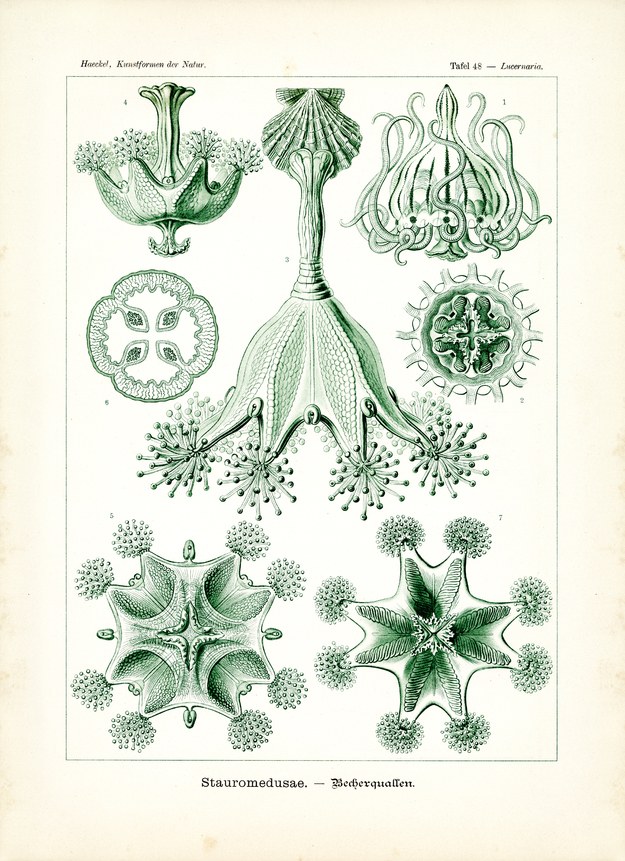Translation of the original German introduction by Ernst Haeckel:
Phylum of Cnidaria (Nesseltiere); - subclass of Acraspedae (Lappenquallen); - order of Stauromedusae (Becherquallen).
The order of Stauromedusae (Becherquallen – ‘cup-medusae’) is the oldest and most original among all Acraspedae and contains those forms that are closest to the common principal form of the whole class. The simplest forms are Tessera and Tesserantha (fig. 1 and 2); their organization deviates little only from that of Scyphostoma, the Scyphopolyp-nurse of Acraspedae being of importance in the germinating process of most Acraspedae until today. While small Tessera swim about freely (like other Medusae), bigger representatives of a second family, Lucernaridae, got used to the attached way of living common to their polyp-ancestry, fixed to the ocean floor with the parting of their umbrella; most species have thus developed a long, muscular shaft. Acraspedae, whether hanging down from a shaft like a drop-light or sitting upright on the shaft, have therefore again assumed polyp form; and were hence earlier considered to be corals. Their anatomy, however, especially the structure of the umbrella and the ‘feeding organs’ (Gastro-canal-system) clearly indicates that they originate from acraspedic Medusae, which forgot swimming. It is a characteristic feature of the genuine Lucernaria to develop eight brush-shaped tufts of small auxiliary tentacles from the eight rim lopes of their umbrella while the original eight main tentacles, placed in between, (four primary perradial and four subsidiary interradial) remain either as small bean-shaped ‘Randaker’ (fig. 3-5) or disappear altogether (fig. 7).
Translation by VR Translators Bangalore
We've scanned the original lithography at 1200dpi on the Epson A3 scanner of A3 scanner huren. You can download a 400dpi JPEG here.
